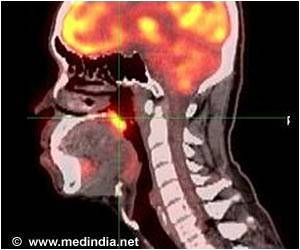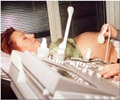Approximately one out of five adolescents has a diagnosable mental health disorder, and nearly one-third show symptoms of depression.

‘Given the rise in adolescent depression, it is important for parents, caregivers, and educators to understand the symptoms of adolescent depression and how to help.’





In a report of their findings, published in the December issue of the American Journal of Public Health, the researchers say the program was designed to prevent suffering at a time when adolescent depression rates are on the rise and many believe awareness, early recognition and effective therapies can lead to better outcomes. "We believe that early treatment and self-recognition of depression are essential for reducing suffering in young people, and our results validate the overall effectiveness of the program," says Karen Swartz, M.D., associate professor of psychiatry and behavioral sciences and founder of ADAP at the Johns Hopkins University School of Medicine.
The curriculum focuses on how to recognize symptoms of depression and how clinical depression is diagnosed and treated. It also seeks to take the stigma out of acknowledging and treating depression and recognizes that suicide can be a consequence of depression.
Now in its 19th year, ADAP has been taught to more than 80,000 high school students. The six-hour training for ADAP instructors is in-person and the three-hour program is taught to students in two to three consecutive classes. Tools include lectures, videos, group activities and homework.
For the evaluation, Swartz and her team looked at data collected from 2012 to 2015 from 6,679 high school students in 54 high schools in Maryland, Delaware, Pennsylvania, Michigan and Oklahoma.
Advertisement
All students filled out the Adolescent Depression Knowledge Questionnaire and the Reported and Intended Behavior Scale just before starting the curriculum, six weeks after taking the course, and four months after the classes to assess improvements in depression literacy and mental health stigma.
Advertisement
Sixty-five teachers participated in an online survey to assess their experience with the curriculum and whether students sought help for depression.
Those students who received the ADAP curriculum were considered more likely to be depression-literate as defined by scoring an 80 percent or more on the 17-question Adolescent Depression Knowledge Questionnaire. More than 54 percent of students were depression-literate four months after the curriculum, compared with 36 percent of students who weren't exposed to the curriculum.
Two hundred and one students (average age 16) completed the online Child and Adolescent Services Assessment survey and got parental consent to participate in the study. Of these, 64 percent were girls, and 77 percent identified as white. Sixteen percent of students said they had sought help for depression or another emotional concern after completing the ADAP curriculum. When asked if they needed treatment, 19 percent of these students said they needed help, and out of these, 44 percent ultimately received treatment for their depression within four months of taking the ADAP curriculum.
Of the 65 teachers who completed the teaching survey, 30 said at least one student reached out to them for help for themselves or a friend.
"In participating schools, ADAP is delivered as part of the standard health education curriculum, which facilitates its sustainability," says Holly Wilcox, Ph.D., M.A., associate professor at the Johns Hopkins Bloomberg School of Public Health and the researcher who oversaw the study on the effectiveness of the ADAP curriculum. "We are hoping to adapt this program for middle school students, as the earlier we can reach those at risk, the earlier we can intervene and link them to services."
One of the limitations of the study was that the component of the trial that studied which students sought help for depression did not have a control group. Thus, the researchers don't know conclusively whether the proportion of students exposed to ADAP who sought help for depression is higher than would occur in those who did not receive ADAP.
Swartz says the goal is to design a web-based program to train a greater number of instructors more quickly. The team also hopes to expand its partnership with states, rather than local and county governments, to increase the reach of the program.
Source-Eurekalert















